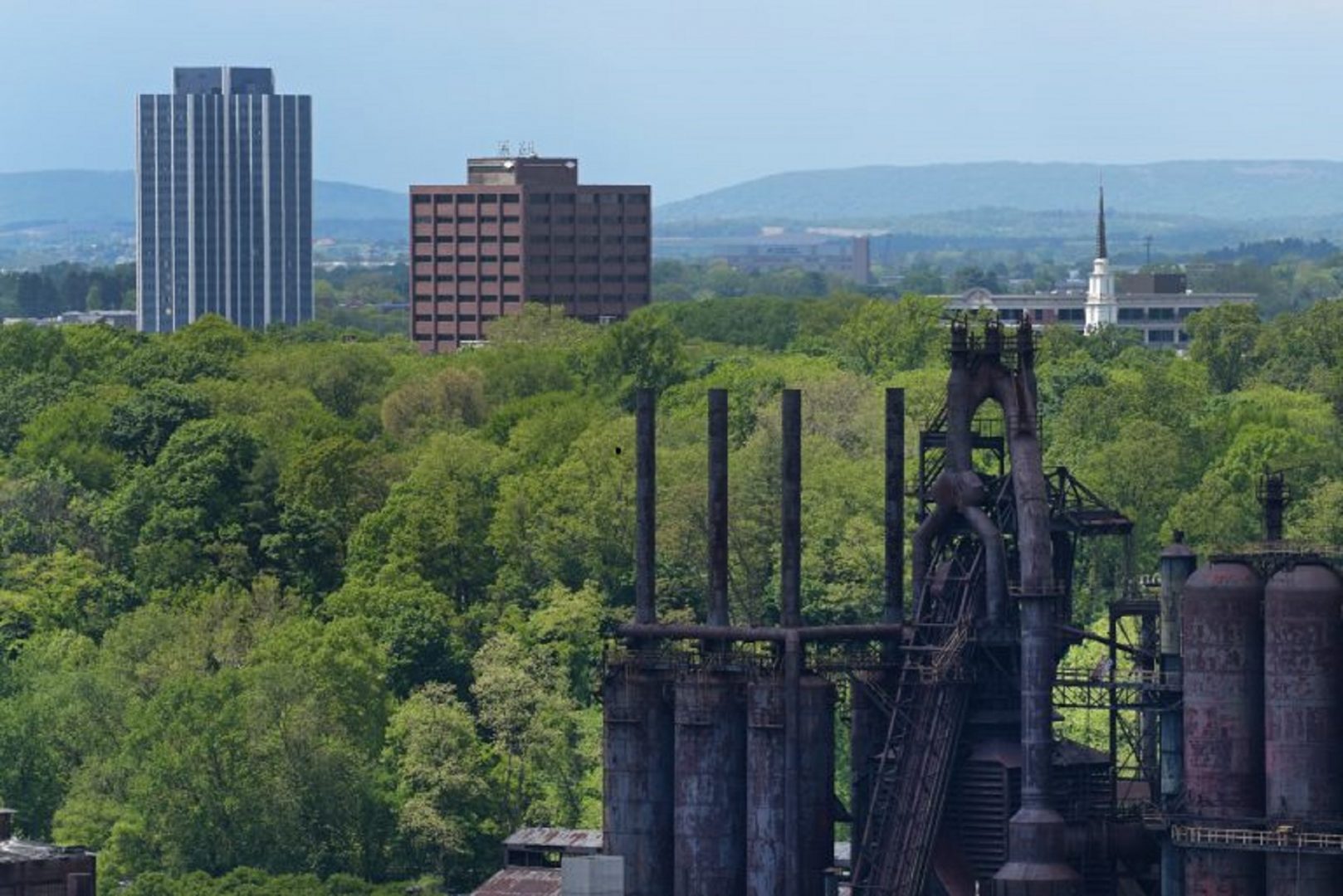
Martin Tower, the former headquarters of Bethlehem Steel, is shown days before a planned implosion.
Matt Smith / Keystone Crossroads

Martin Tower, the former headquarters of Bethlehem Steel, is shown days before a planned implosion.
Matt Smith / Keystone Crossroads

Matt Smith / Keystone Crossroads
Martin Tower, the former headquarters of Bethlehem Steel, is shown days before a planned implosion.
(Bethlehem) — Even today, nearly twenty years after Bethlehem Steel declared bankruptcy, and decades after it began its slow decline, thereâs no consensus why exactly the iconic company tanked.
Some point to ballooning labor costs, others to the growing competition from cheap, foreign steel that bankrupted dozens of other American companies. But Bethlehem Steel, once the second largest steel manufacturer in the country, was hit harder than most, and some say mismanagement played a large role in the companyâs demise.
That reading of history is embodied for Bethlehem residents in Martin Tower, a swank corporate headquarters built in 1972, just 10 years before the company began massive layoffs that forever changed the region.
The company went bankrupt in 2001, and Martin Tower has been vacant for a decade. But it still looms over Bethlehem, a dark, sleek monolith that â for a few more days â remains the tallest building in the Lehigh Valley.
On Sunday, after years of uncertainty about the buildingâs future, the tower will be imploded to make way for new development.
This change is yet one more reminder that the steel era is long gone â but also a reminder Bethlehem has been able to adapt in the industryâs absence.
Unlike many other parts of Pennsylvania that faced declines in the wake of deindustrialization, Bethlehem has been able to preserve its history and legacy while reinventing itself as a hub for education, the arts and tourism.
Still, the demolition feels freighted with meaning for many residents of Bethlehem â both for those who want the tower to stay, and for those who are happy to bid farewell.
If it werenât for Bethlehem Steel, Frank Behumâs ancestors may never have come to America. In 1885, his great-grandfather was living in Austria-Hungary and he responded to an ad.
ââCome to America, passage paid, guaranteed job at Bethlehem Steel,ââ Behum recited.
The next three generations of his family worked at the steel plant. Behum, 68, started in 1969 and worked his way up to motor inspector. Thatâs how it was in Bethlehem â the company was the town. At its height, 31,000 people worked at the plant, nearly half of the townâs population of 75,000.
âIt was sort of like joining a family,â said Behum. âEverybody knew everybody and the name of the game was not only to go in there to make money but also to have a good time. And believe me we did have a good time. We did a lot of things together. Weâd go to family weddings, weâd go to funerals. We did it all.â
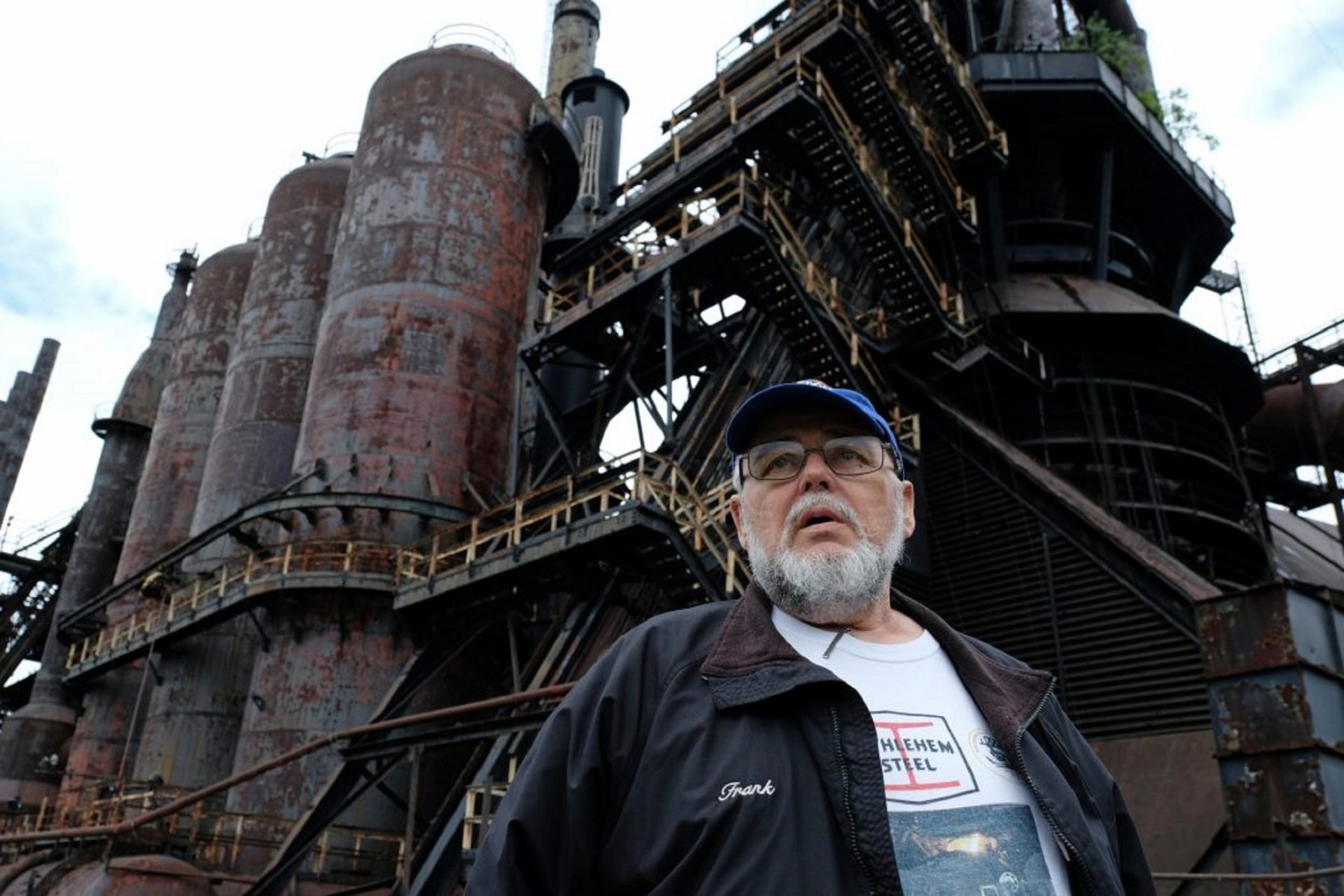
Matt Smith / Keystone Crossroads
Frank Behum, a third generation steelworker and former president of Steelworkers Archives, talks about Bethlehem Steel in front of the blast furnaces that still sit along the Lehigh River on the cityâs south side.
But from the start, Behum could see the writing on the wall. On his first day, a longtime employee pointed out how old all the equipment was, out of date.
âThe setting was like going into a museum,â Behum said.
Bethlehem hadnât switched over to electric furnaces, and they began facing competition from mini-mills that used more modern procedures. There was foreign competition. And there were labor disputes. Wages kept rising, and the company didnât invest enough to keep its workersâ pension fund solvent. When the company closed plants, it started a vicious cycle: every closure meant more workers entitled to retirement benefits that the company couldnât afford.
âThey did things quote, âThe Bethlehem Way.â Well we saw where the Bethlehem Way led them,â said Behum. âThey ran the train right off the tracks.â
All the while, the companyâs top leaders were some of the highest paid corporate executives in the country. And in 1972, they built themselves a new headquarters: the 21-story Martin Tower.
It was cushy. In a recent episode of The Morning Call podcast, Marian Hough, who worked as an administrative assistant in the tower, recalls a luxurious lobby with beautiful women operating the elevators. The whole building was shaped like a plus sign to maximize the number of corner offices.
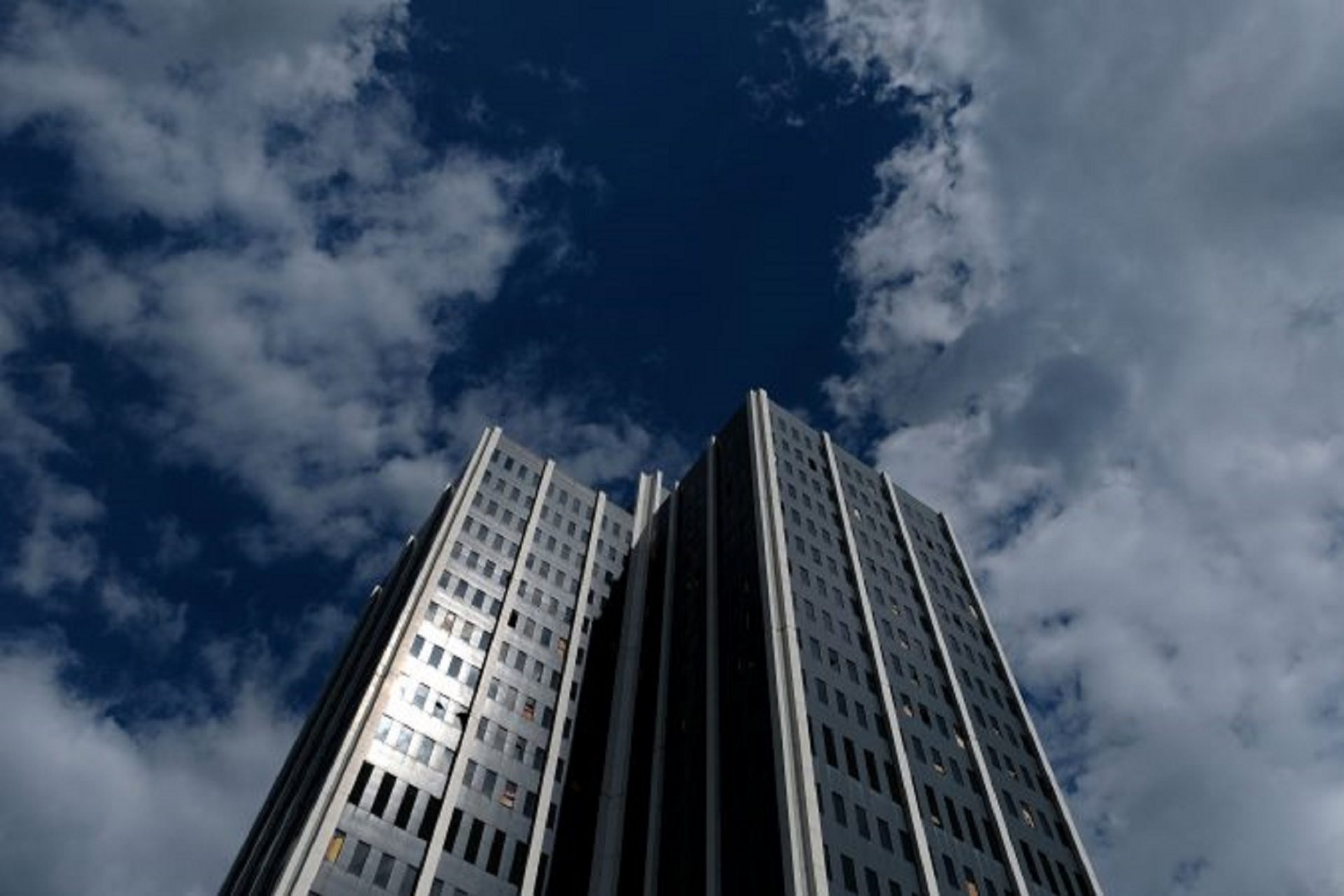
Matt Smith / Keystone Crossroads
The tower was constructed in the shape of a plus sign to maximize the number of corner offices for Bethlehem Steel’s executives.
This was the height of Bethlehem Steelâs profitability, but the seeds were already sown for its demise. Within 15 years, Martin Tower was almost empty. There had been huge layoffs of both blue-collar workers at the steel plant and white-collar workers at the head office. Â Tens of thousands lost their jobs. The Bethlehem plant closed in 1995, and the company declared bankruptcy in 2001.
Martin Tower cycled through a few new tenants, and then became vacant. Still standing, but idle.
Kassie Hilgert moved to Bethlehem with her family as a teenager, and she recalls that in the wake of the bankruptcy, the tower became a fraught symbol.
âIt seemed like there was all this attention and focus on that tower, of you know, âSomewhere in that building, in an office, is where everything went wrong,ââ she said.
In fact, when Martin Tower was added to the National Register of Historic Places, its statement of significance cited this history.
âThe tower is a powerful representation of an inward-thinking corporate culture in a time of increasing foreign and domestic competition, labor unrest and legacy costs that is emblematic of the problems that foreshadowed the deindustrialization of America,â the statement reads.
Bethlehem was better suited than many steel towns in Pennsylvania to bounce back â in large part due to its proximity to Philadelphia, New York City and a cross-section of major highways. Business leaders in town also had the foresight to invest in warehousing, office parks, and other industries.
The arts have also been part of Bethlehemâs resurgence. Hilgert is the director of ArtsQuest, a nonprofit that sits on the site of the former Bethlehem Steel plant. Much of the 1600 acre property was purchased in 2007 in order to build the Sands Casino, which anchors the northern part of the site.
ArtsQuest occupies 10 acres, hosting concerts, workshops, and classes in the shadow of the old blast furnaces, which tower 200 feet in the air. Theyâve been preserved but upgraded. Today thereâs an elevated walking path along the remnants, popular with artists and photographers looking to get a better view of the rust.
Painter Rachel Lussier has been traveling to Bethlehem from Stamford, Connecticut several times a year to paint the ever shifting palette of the furnacesâ patina âfrom matte, coppery reds to iridescent blues and purples like the inside of an oyster shell.
âItâs like a shrine, itâs a temple. Weâre all coming to worship, almost in an unconscious way,â she said.
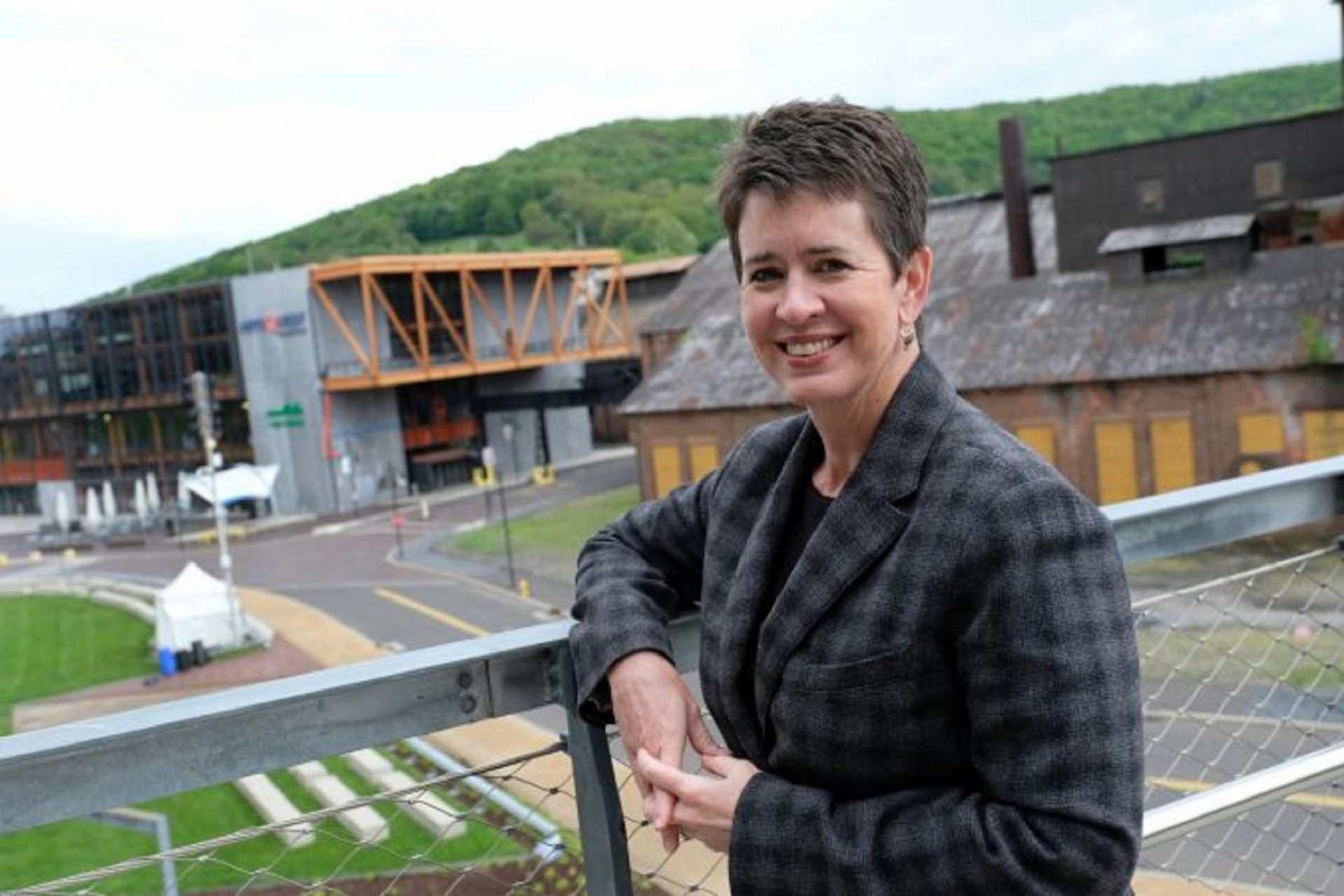
Matt Smith / Keystone Crossroads
ArtsQuest President and CEO Kassie Hilgert stands on the SteelStacks campus, which sits at the base of the former blast furnaces of Bethlehem Steel.
Lussier identifies with Bethlehemâs past as a place where things were made.
âI love the town, I love how scrappy this town is,â she said. ââWhat strikes me about the community is they look at the lemons and theyâre willing to make lemonade.â
Musikfest is a great example. The annual music festival that draws nearly a million people to see hundreds of concerts over a week and a half was founded in 1984 in direct response to that yearâs massive layoff.
The furnaces have also been rebranded as the SteelStacks, a name Behum resents. âThatâs a word that we donât use as steel workers, the stacks,â he said. These furnaces actually made iron. âHow it became steel stacks is beyond me.â
But theyâre still here, a plaintive reminder of Bethlehemâs past, and still an engine of its present prosperity.
This was the real heart of Bethlehem Steel, Hilgert says, not Martin Tower.
âI think whatâs important is weâve maintained the actual part of the company which turned out the steel for World War II, for the Golden Gate Bridge, for much of the skyline in New York City. So that remains.â
But over the years, sheâs also noticed reverence for Martin Tower has grown. It was controversial when it was built, not only for its opulence, but also for its site on the north side of town, far from the blast furnaces.
âBut, funny, over time, that has morphed into this love of Martin Tower,â said Hilgert. âAll of a sudden, it seems like overnight, it became the identity to some people.â
The news that the tower would be imploded has unleashed a wave of nostalgia in the region. Itâs spawned t-shirts and jokes about sending Martin Tower to space.
Bars and restaurants around Bethlehem are planning viewing parties for the implosion, which is scheduled for 7 a.m. Sunday morning. Joeâs Tavern, one of Bethlehemâs oldest bars, which used to open at 7 a.m. to serve steel workers after night shifts, announced one final early opening for the morning of the implosion.
âAlthough we canât bring ourselves to celebrate the implosion, we are going to toast the working class and generations of families that benefited from The Bethlehem Steel,â says the tavernâs Facebook page.
Around town, reactions to the demolition are mixed.
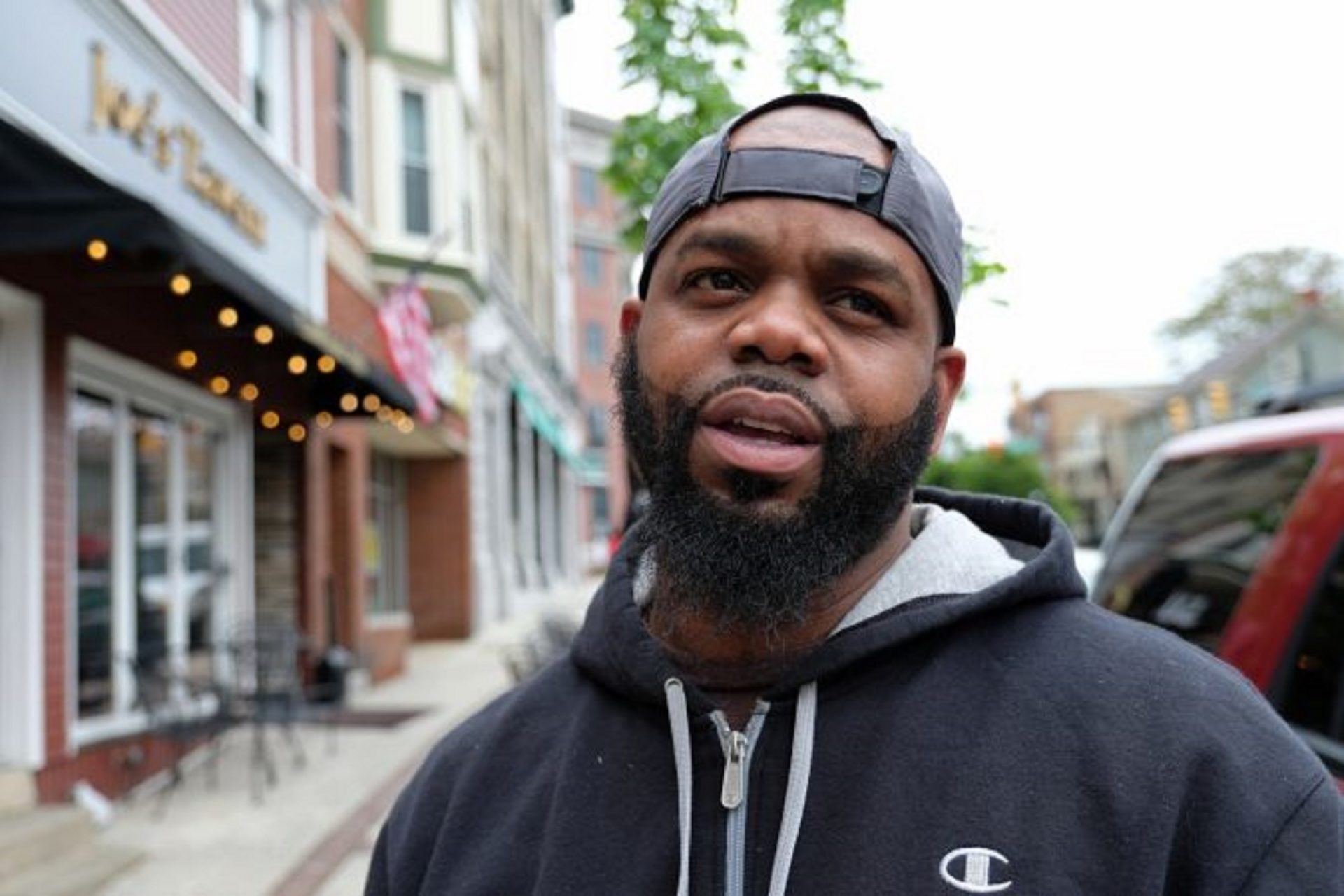
Matt Smith / Keystone Crossroads
Troy Smith grew up in Bethlehem and recently moved to Allentown. His brother used to work with a temp agency in Martin Tower. But heâs not sad about the implosion. âI just want to see it go down. I think that will be cool.”
Bethlehem native Billy Grunewald is a chef at Peopleâs Kitchen, a hip breakfast and lunch spot, serving breakfast mac and cheese and bourbon french toast. He says itâs cliche to say it, but Bethlehem is in the midst of a renaissance: new restaurants are opening up, trying to attract people year round, instead of just at Musikfest and the Christmas season.
Grunewald doesnât have any nostalgia for Martin Tower â which has been empty almost half his life â but some of his older customers do.
âWhereas the steel stacks are more like, thatâs the image of the industrial revolution that went on here, the towers are more just of a â I think âa painful reminder of how this town went from boom to bust,â he said. âIâd rather see it put to good use. Iâve never seen anything in that building.â
As we spoke, his friend walked in, 29-year-old Mark Emeigh, also a local. Heâs sad to see Martin Tower go.
âI wish it wasnât going to happen. Itâs such a landmark of Bethlehem,â he said.
Still, heâs bummed to be missing the demolition â he has to work. And all around town, people are looking forward to the spectacle.
Troy Smith grew up in Bethlehem and recently moved to Allentown. His brother used to work with a temp agency that briefly occupied Martin Tower.
âI just want to see it go down, I think that will be cool,â he said.
Megan Miller, a regular at Joeâs Tavern, said the tower is a visual icon for Bethlehem.
âComing off 378, anywhere coming into Bethlehem, you just see the tower,â she said.
Because of its height, Martin Tower is a wayfinder for a lot of people. Seeing the tower on the skyline tells you where you are. To lose it, some say, will literally be disorienting.
Hilgert lives close by, and uses the tower to give people directions to her house.
âSo Iâm going to have to start to learn the street names,â she joked.
On Sunday morning, Mayor Bob Donchez will be monitoring the demolition from one of two command centers. When asked what he expects to happen, he says, âhopefully, it will be imploded,â and laughs.
Heâs never seen anything like this before and says itâs been a feat of coordination between many city, county, and state entities.
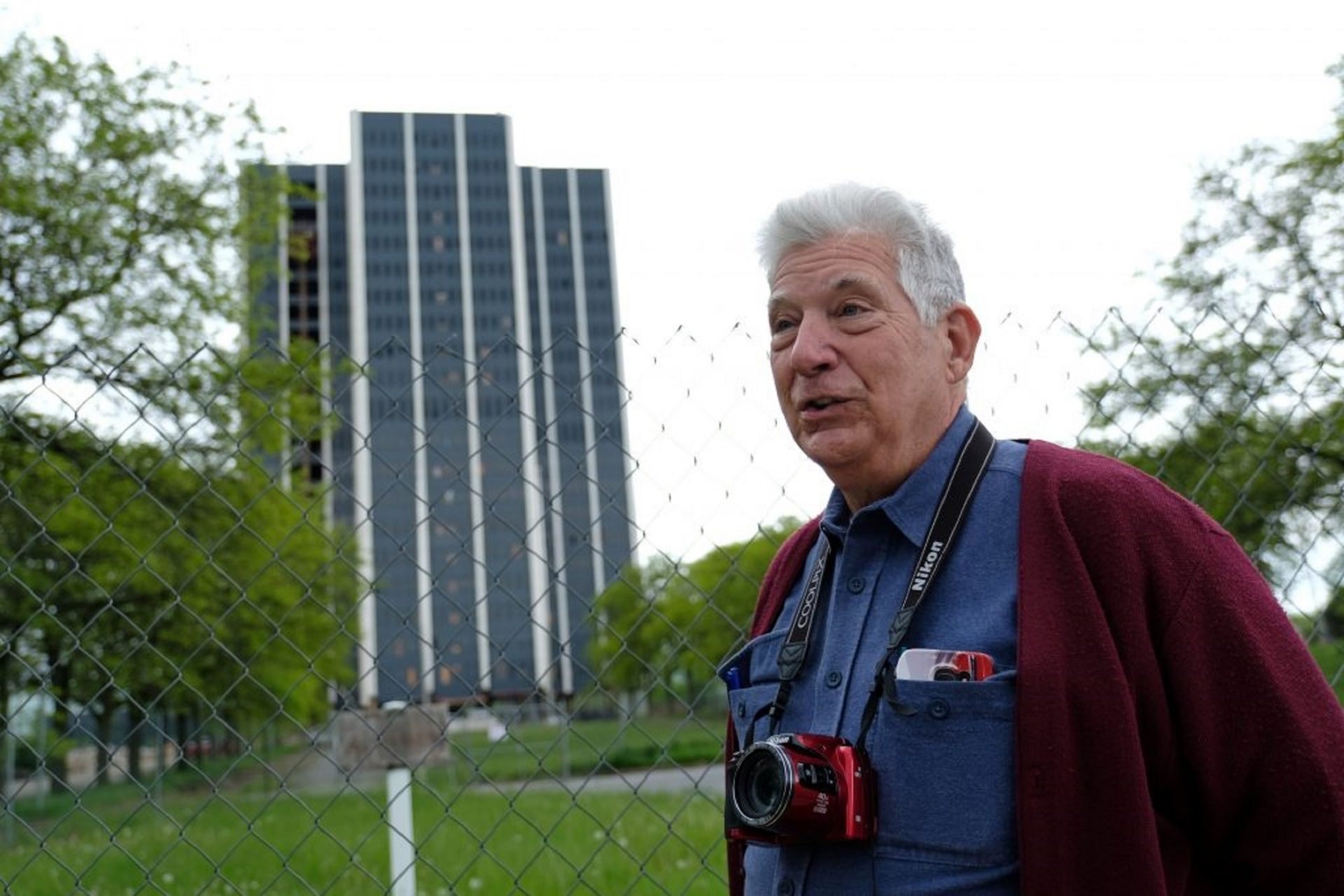
Matt Smith / Keystone Crossroads
Jack Matyas, a former steelworker from Bethlehem, came to the tower to take photos in the days before the implosion.
The actual demolition is only expected to last about 17 seconds, but the city will be closing streetsaround Martin Tower for a few hours to let the dust settle. All of the asbestos has already been removed, but some residents raised concerns about that dust at a lengthy public meeting last week.
The city is urging residents to watch from the safety of their homes, on television.
After the clean-up, which will go on for months, developers have proposed turning the site into a mixed-use development with apartments, retail, office buildings, a hotel, and gas station. Thatâs raised some concerns about creating a âthird downtownâ that will compete with two existing retail corridors in the city.
To Alicia Karner, the cityâs director of community and economic development, itâs just another opportunity for Bethlehem to grow and diversify its tax base, another way that the bankruptcy of Bethlehem Steel has created possibilities. The Sands Casino will soon be sold to Wind Creek Hospitality, and theyâve already announced plans to invest $190 million rehabilitating more of the old industrial site where the plant was. Now the site Martin Tower will be back in play too.
Karner is somewhat disappointed that Bethlehem will no longer have claim to the Lehigh Valleyâs tallest building, âbut Iâd trade that for life on the site. Weâve had a dormant 53 acres for a long time.â
A few days before the implosion, a steady stream of onlookers made their way for one last look. Jack Matyas, a lifelong resident of Bethlehem and a former steelworker, was taking photos.
âI never thought Iâd see the day,â he said. âIâm sad. Apartments are never going to replace Martin Towers.â
Heâs already thinking of Monday morning, after the implosion.
âIâll drive by, for sure, and there will be nothing but air.â
Keystone Crossroads is a statewide reporting collaborative of WITF, WPSU and WESA, led by WHYY. This story originally appeared at https://whyy.org/programs/keystone-crossroads.
The days of journalism’s one-way street of simply producing stories for the public have long been over. Now, it’s time to find better ways to interact with you and ensure we meet your high standards of what a credible media organization should be.